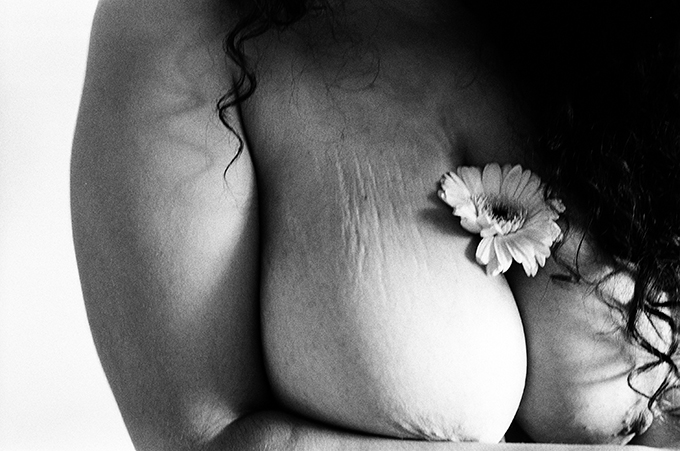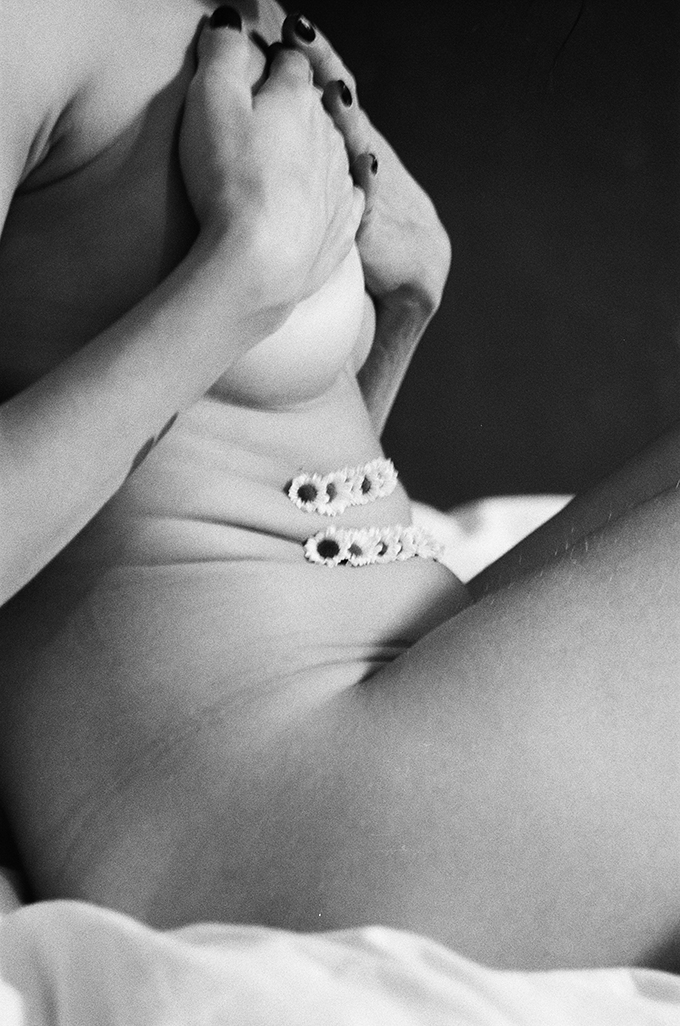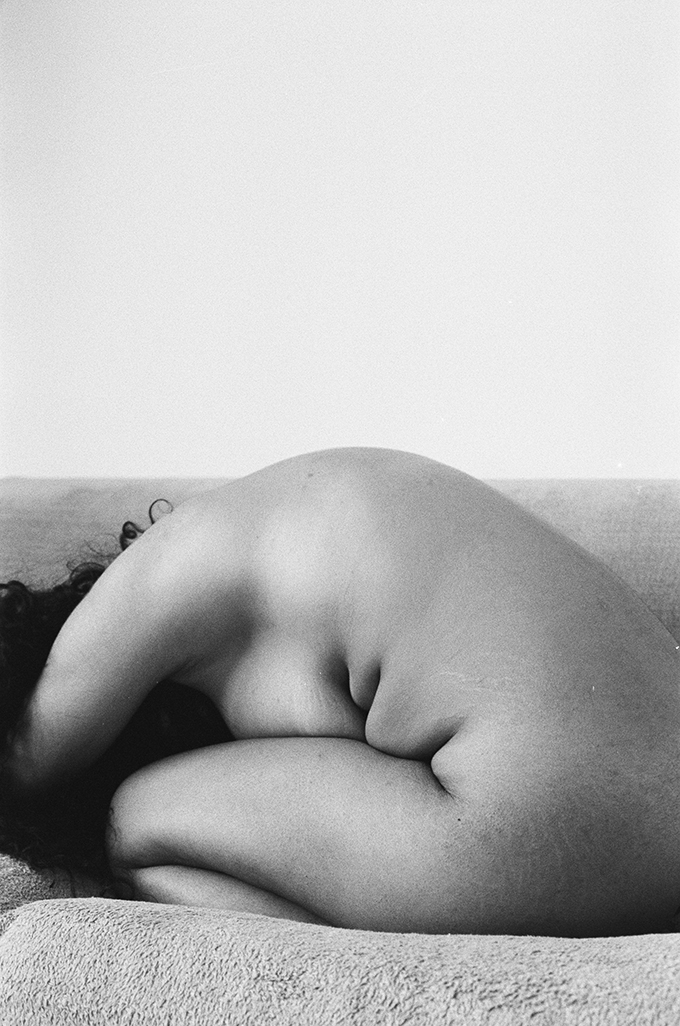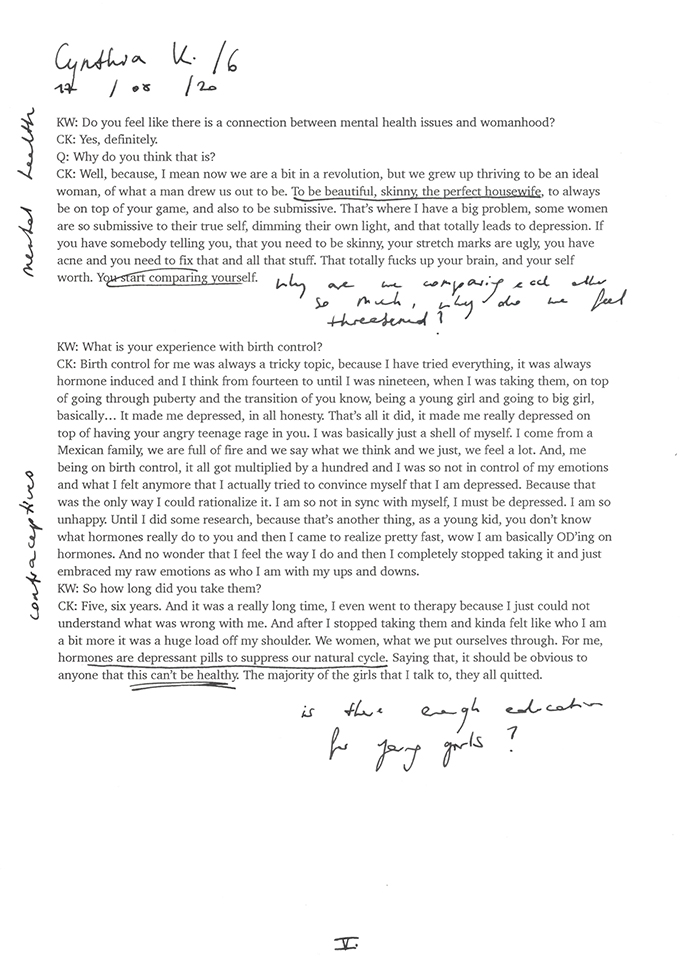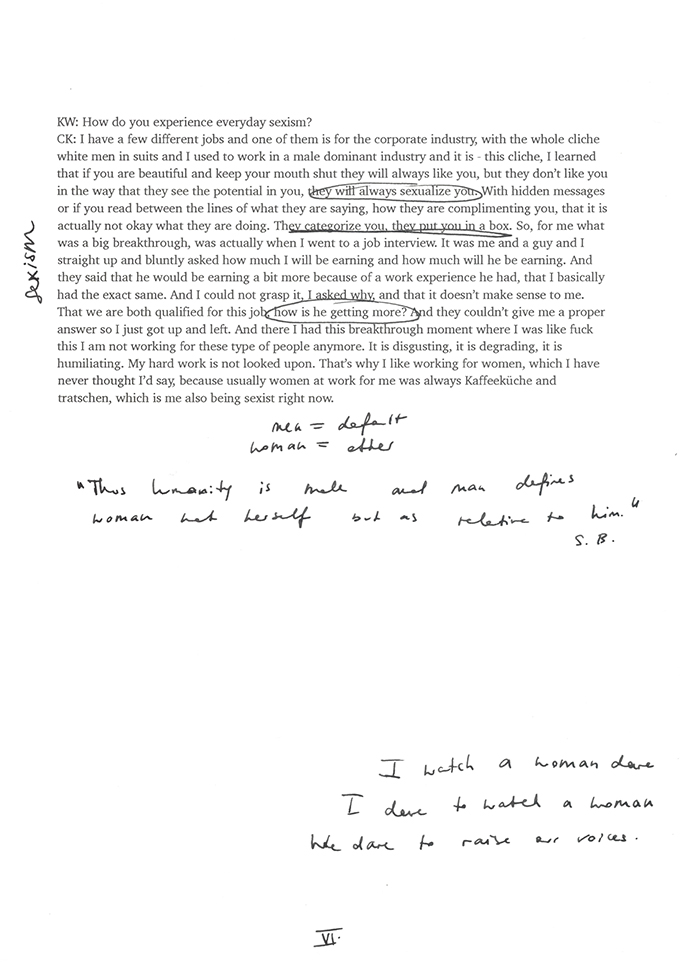
Self Portrait by Katharina Wolf © Katharina Wolf
Inspiration/Objectification: Katharina Wolf on finding her voice as a young photographer
Although being a young creative is incessantly glamourised, the reality can be incredibly daunting. Getting started out in an artistic field is an often-mystified process; complicated by the pressure to find a unique style and vision. Katharina Wolf, a 25-year-old photographer who was born and raised in Vienna, spoke to me about how she started out in photography, and her first projects. She is the partner of Heroine Lisl Ponger’s son, who shared with me her amazement at how Katharina has picked up her training and knowledge simply by looking at other photographers’ works. Expressing further that she believes it has allowed Katharina to find a unique way of photographing women, unshackled by formal training.
Katharina Wolf is still at the start of her career, she is currently working on two series Femme/Maison and Instrument/Ornament. Her work is deeply personal, working out her own complicated relationships with gender and body image through photography and text. From her home in Vienna, Katharina spoke to me about her biggest inspirations, the limitations of the so called ‘body-positivity’ movement, capturing modern-day womanhood, and her hopes for the future.
Enez Nathie: How did you get started in photography? Have you always wanted to be an artist?
Katharina Wolf: I think I always wanted to be an artist, but I kind of lost confidence along the way. I was always super into photography, and I went to a school where we had some classes in photography and film. It was always very interesting, but I kind of lost my interest in photography there a little bit, because we used to shoot digitally and we would always just take 100 pictures of one thing. It was just all so interchangeable, and I didn’t like that because I lost my focus. Then I didn’t do anything artsy for about a year or two, but then I just felt the urge again, to document my surroundings mostly. For me it’s very personal, photography, it’s always an urge I feel to do certain things. I guess I don’t want to forget anything – so I take pictures of the people surrounding me and that I encounter in my day to day life.
EN: So, you never went to art school? Do you think that has had an impact on the way you go about your work?
KW: I think it did in the sense that all the education I had in photography is from books, and the books that I choose. I mean, I think you can see a little bit what’s going on in the background (points to a very full bookshelf). Like, these are just a few of my photography books, this is my education. I pick up a book in an art bookstore, and then I look at the pictures and see how they are done, why they catch my attention. So, I think this is more of my education – I just look at what people before me have done and see how I can use that information to create something that maybe comes near the greatness of the masters of photography.
EN: Since you have a lot of photography books that you use for inspiration, are there any specific artists, or even writers or singers, who inspire your art?
KW: I mean, yes, a lot! I love to read novels as well as scientific books. But, I think the artists that inspire me the most would probably be Mary Ellen Mark, because she was just an amazing person and she also told people’s stories, and I just love that. Saul Leiter also, he’s a very big inspiration of mine, with the way that he photographed women and composed such cinematic pictures with what seems to be real life. Many other artists too, not just photographers. Like I love Tracey Emin and Louise Bourgeois, they have had a very big impact on my work, and I always go back to them when I can’t find inspiration. I keep these little scrapbooks where I put all of my inspiration, and I glue in their pictures and write in what they’ve said.
EN: What inspired you to create your new series Instrument/Ornament?
KW: Well, the title in itself is a mantra that I like to keep telling myself because: my body is an instrument, not an ornament. I just noticed, also, when working on the Femme/Maison project, that there were some recurring topics, and one of them was problems with body image. Everybody, I think, acknowledges them. We know that they are there, and we know that media and social media has such a big impact on how we feel about our bodies, but still, we are a prisoner of it.
I noticed that this was a common theme – and also something that I have struggled with in my past, and still in my present, I keep struggling with body image. So, I wanted to create something to address it, and it’s always combined with interviews, I can’t go without them apparently. I’m asking people, how they feel about their bodies, and what might have given them the impression that they should feel this or that way about their bodies. At the same time, I photograph them and it’s very beautiful, because these people are opening up to me, and letting me in on such a private part of their lives.
EN: You have said that you’re interested in reality and in real people, and that you often spend a lot of time with the subjects that you photograph in order to uncover their stories. Do you consider your art to be a type of a social research?
KW: Yeah, I think it is. I mean, it’s not all social, but also very personal research. Because everything I do is based on things that I am interested in, or things that I question, or that I might have to work through. I just want to know from other people what their experience with the same topic might be. And maybe, I don’t know, get some solutions out of it.
EN: You have said that it’s also quite personal, is photography something that’s also been therapeutic to you?
KW: I think I’m still uncovering it, but of course it helps me a lot to see that so many other people deal with the same stuff that I do. That they have the same struggles, even though they look completely different than me. To realise it’s not a real threat, this thing, and talking to other people and seeing their beautiful bodies, no matter how they look just helps to, to see that it’s not a real thing.
EN: Your series Femme/Maison explores womanhood and what it is to live as a woman. Why did you choose to accompany these portraits with interview text and your personal annotations?
KW: I don’t know why I have chosen to do this; it just felt that it would be the right thing to do. Like it always interested me a lot when pictures get accompanied by some statements that made the person on the picture even more real. That it’s not just an outer shell of a person, that their story is a little bit connected. I just really want to show people as wholly as I can show them, and I think with that said word or written word it’s just a much more personal and complete picture of them.
As for my annotations, they’re partly taken from inspirations that I had before I even started: from other photographers, or artists, or books that I’ve read. But, then also just seeing which topics reoccur, I had them laid out and just looked at all the different interviews that I had done. I saw so many topics that were so present in each and every woman and it was a bit scary – because there were so many of the same statements being said – but it was also very reassuring because I know that I have felt some similar things.
EN: The other component of this series is home (maison). Why did you want to take these portraits in women’s homes?
KW: I wanted to portray or I always want to take pictures of people that are not superficial. I think how one lives shows so much about oneself, and I also wanted to create some intimacy and I think the best way to do that is to be in a very private setting. I’m also… I think, a very nosy person and I always have been – that’s also why I go to people’s homes and ask them questions. I just have the need to know everything. I like to see how people live and also capture their environment in the pictures, that’s very important to me too.
EN: There’s a lot happening in the media surrounding body positivity at the moment, and I’m wondering if you’ve noticed a change in how women’s bodies are perceived, if you think that women are being better represented, or that in reality not much has changed?
KW: I think that when you look from the outside, and you look maybe on Instagram, with all the body positivity posts, you will feel that there is a different perception of women’s bodies, but my experience tells me that there isn’t really. Because, after all, I think it’s not really important to be body positive. For me it would be healthier, and for a lot of other people too I guess, to lift that gaze completely off of the body – and to more important things, like what you can do and achieve with your mind and your body.
There’s also this weird misconception… For example, take fitness, how often do we define our fitness based on how our bodies look or how thin they are, rather than what they can really achieve? And I think that this constant objectification just makes us also self-objectify, and that is what’s very unhealthy. So, my goal for myself – and I also want to play with this in the project – is to lift the gaze from the body to the mind, or to the power of your body. That’s also why it’s called Instruments/Ornaments, so that you can play with these ornamental shapes that are just amazing instruments that you can use for so many things.
EN: Do you think that women will always be an important focus of your photography?
KW: They probably will, but I will not exclude anybody, I really don’t want to do that. It’s just where I started, from my personal point of view of course womanhood is a big topic, and feminism is a big topic. But in Instrument/Ornament there will also be men, talking about their body image and their struggles with it. I kind of want to show that body image, and struggles with how your body looks, they’re not only about gender.
I recently saw this exhibition book [‘Masculinties: Liberation Through Photography’], and at first, I had this confusion about it, because I focus on working with women and the female body. Now I’m kind of trying to understand that it’s not only us who get shaped by society, it goes all the way. Not only women, also men, get shaped in a certain way. If we work together and break up all these things, I think we’re going to be fine. So, it made me think that maybe I could widen my horizon a little bit.
EN: Finally, what’s next for you?
Well, I’m still working on both of the series [Femme/Maison and Instrument/Ornament], they’re not finished right now. It’s been kind of put on pause, because of the pandemic. Right now, my body of work is very much women my age, and just my circle, and I think that’s not a very conclusive picture of womanhood if there are only 25-year-old women. So, I just want to go and expand a little bit and have younger women, older women, everybody.
I think that I would really like to finish at least one of these projects in the next year, which will be very difficult because they are very extensive with the interviews and transcribing too. There’s three hours of material per person which I then transcribe, so it takes a lot of time, and I want to be as thorough as I can be. So, I don’t know if I’ll be finished next year, but I would hope so. What I’m working towards is, of course, to make them into books. That is what I would really like because I love books, and I would love to make one of my own. That will be a goal definitely!
Images courtesy of Katharina Wolf

